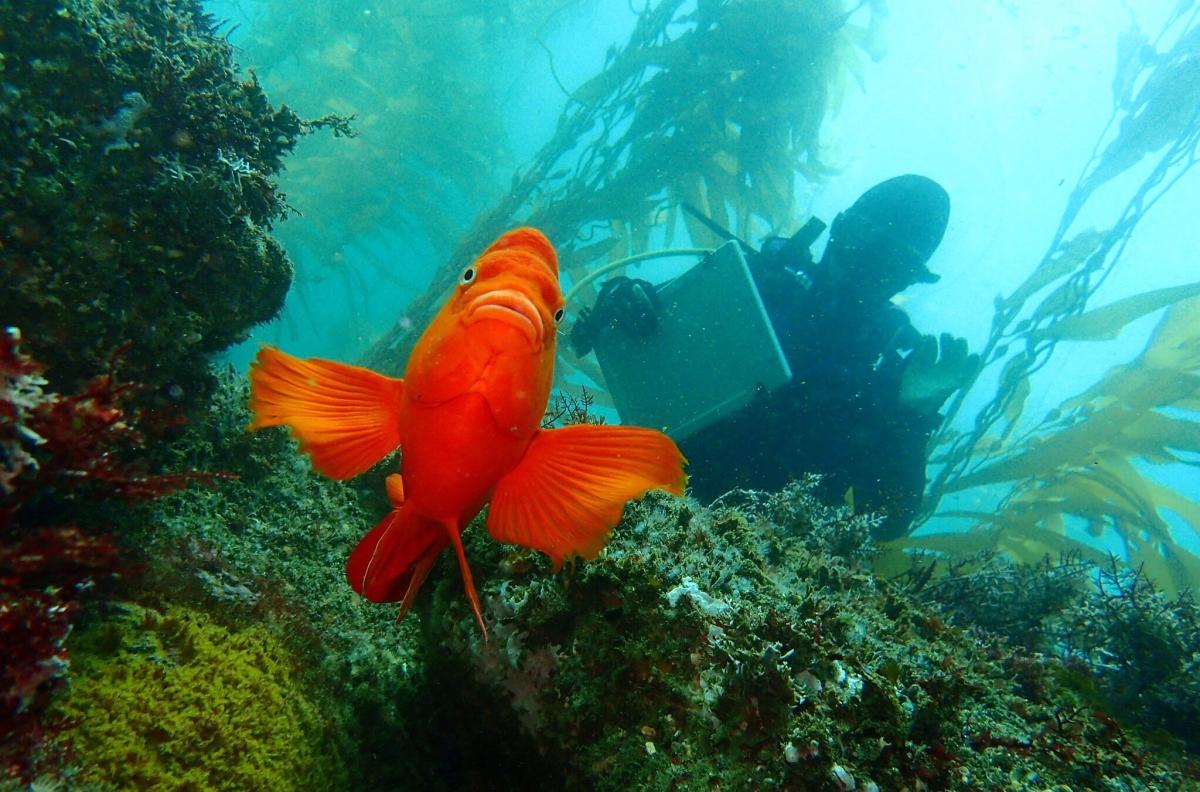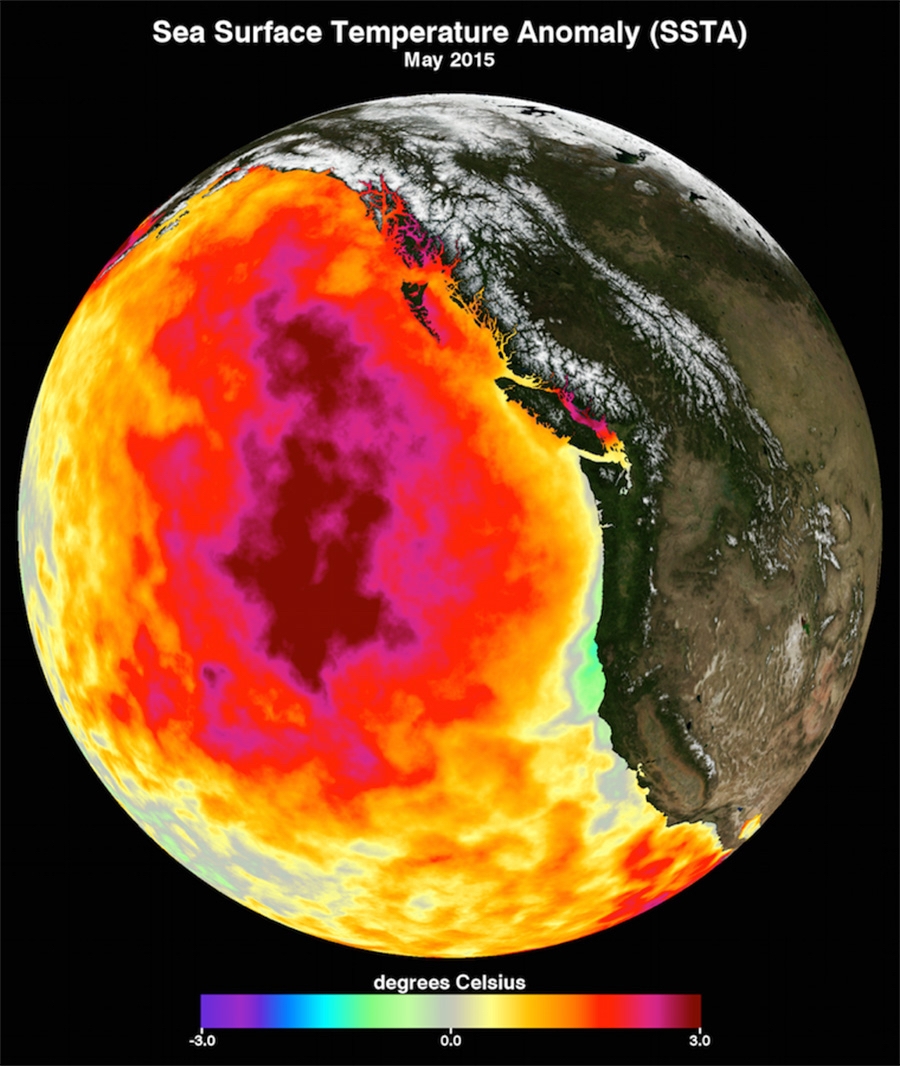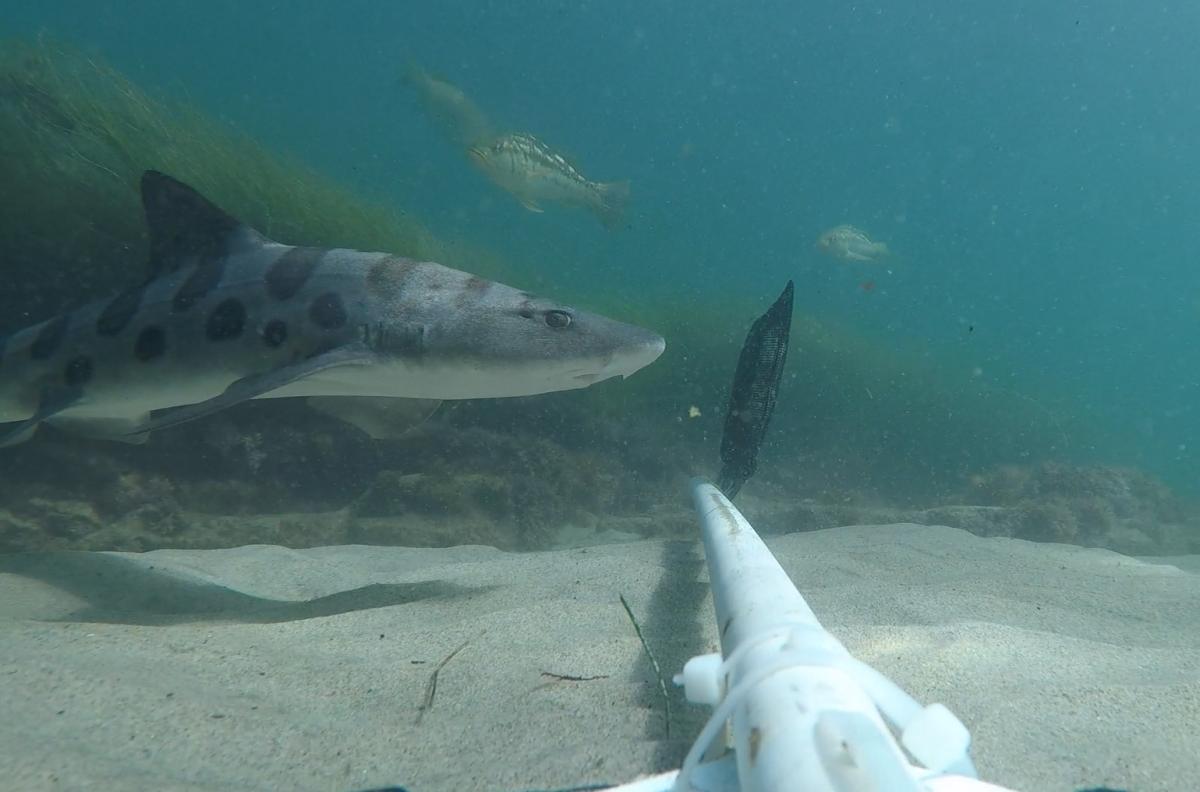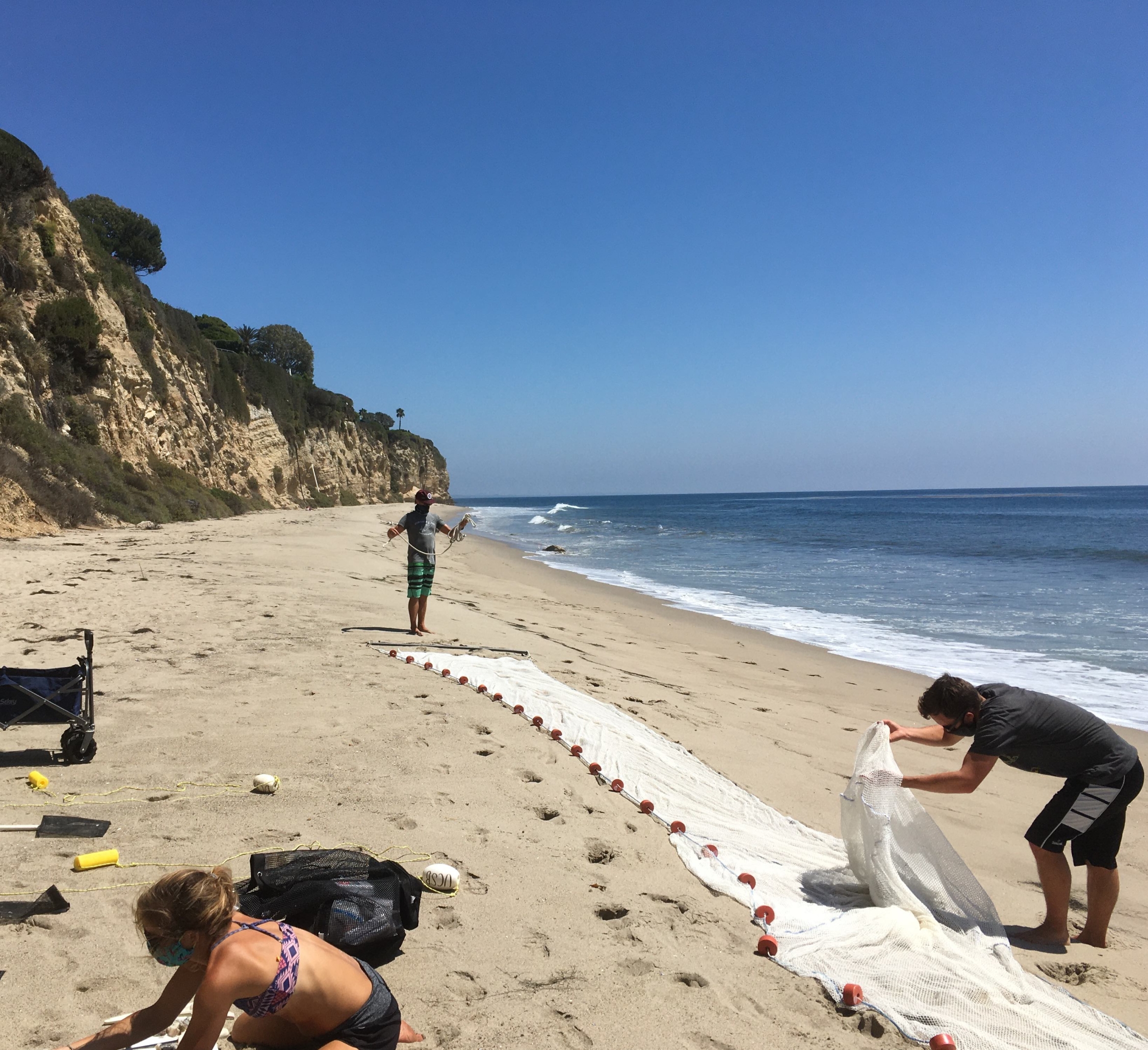
A research diver conducts periodic monitoring of a kelp forest marine protected area. Photo Credit: Chris Honeyman
Rising ocean temperatures are sweeping the seas, breaking records and creating problematic conditions for marine life. Unlike heatwaves on land, periods of abrupt ocean warming can surge for months or years. Around the world these ‘marine heatwaves’ have led to mass species mortality and displacement events, economic declines and habitat loss. New research reveals that even areas of the ocean protected from fishing are still vulnerable to these extreme events fueled by climate change.
A study published today in Global Change Biology, led by researchers at UC Santa Barbara, found that while California’s network of marine protected areas (MPAs) provide many social and ecological benefits, they are not resilient to the effects of ocean warming. MPAs are locations in the ocean where human activities such as fishing are restricted to conserve and protect marine ecosystems, habitats, species and cultural resources. The study, part of a 10-year review of California’s MPA network conducted at UCSB’s National Center for Ecological Analysis & Synthesis (NCEAS), found that marine heatwaves impact ecological communities regardless of whether they are protected inside MPAs.
“MPAs in California and around the world have many benefits, such as increased fish abundance, biomass and diversity,” said Joshua Smith, who led the study while he was a postdoctoral researcher at NCEAS. “But they were never designed to buffer the impacts of climate change or marine heatwaves.”

The Blob — the first phase of anomalously high ocean temperatures in the eastern Pacific Ocean in 2015. Photo Credit: NASA
Smith and co-authors from all over the world were part of an NCEAS working group formed to synthesize decades of long-term ecological monitoring data from California’s diverse ocean habitats. The group, co-led by Jenn Caselle, a researcher with UCSB’s Marine Science Institute, and Kerry Nickols, a professor from Cal State University Northridge who now works with the non-profit Ocean Visions, aimed to provide actionable scientific results to California’s policy makers and natural resource managers, as part of a statewide Decadal Evaluation of the MPA network. Their analyses spanned the largest marine heatwave on record, which rolled through the Pacific Ocean toward California from 2014-2016.
As MPA managers around the world face increasing climate shocks, the extent to which MPAs can buffer the worst of these events has become an important question. The working group scientists asked how the ecological communities in California’s protected areas fared after such a severe and prolonged heatwave: Would the communities shift and if so, how? Would they ‘bounce back’ when the marine heatwave subsided? Could the marine protected areas protect sensitive populations or facilitate recovery?
To find answers to their questions, they synthesized over a decade of data collected from 13 no-take MPAs located in a variety of ecosystems along the Central Coast: rocky intertidal zones, kelp forests, shallow and deep rocky reefs. The team looked at fish, invertebrates and seaweed populations inside and outside these areas, using data from before, during and after the heatwave.
They also focused on two of these habitats, rocky intertidal and kelp forests, at 28 MPAs across the full statewide network to gauge whether these locations promoted one particular form of climate resilience — maintaining both population and community structure.
“We used no-take MPAs as a type of comparison to see whether the protected ecological communities fared better to the marine heatwave than places where fishing occurred,” said Smith, now an Ocean Conservation Research Fellow at Monterey Bay Aquarium.
The results are somewhat sobering, though not altogether unexpected.
“The MPAs did not facilitate resistance or recovery across habitats or across communities,” Caselle said. “In the face of this unprecedented marine heatwave, communities did change dramatically in most habitats. But, with one exception, the changes occurred similarly both inside and outside the MPAs. The novelty of this study was that we saw similar results across many different habitats and taxonomic groups, from deepwater to shallow reefs and from fishes to algae.”

A leopard shark, and in the background a kelp bass captured by baited remote underwater video camera in a marine protected area. Photo Credit: Jessica Madden
The implication of these findings, according to Smith, is that every part of the ocean is under threat from climate change. “MPAs are effective in many of the ways they were designed, but our findings suggest that MPAs alone are not sufficient to buffer the effects of climate change.”
The key question now is what will happen in the future? At the time of this study using data through 2020, the ecological communities have not returned to their former, pre-heatwave state. According to the paper, these ecological communities shifted toward a “pronounced decline in the relative proportion of cold-water species and an increase in warm water species.” For example, increases in the abundance of the señorita fish (Oxyjulis californica), a subtropical species with warm water affinity and previously rare in central California, had an outsized influence on the shift of communities. Whether these species persist in their new locations remains to be seen.
“This study makes it clear why long-term monitoring of California’s MPAs is so critical,” said Caselle. “Some of these time series are longer than 25 years at this point and the data are critical to understanding and readying human communities for the changes occurring in our marine communities.” Continued study will show if future shifts in marine communities occur at different rates or to different base states in MPAs compared to fished areas.

Researchers setting up a seine to get a sense of the nearshore fish community at a marine protected area. Photo Credit: Jenny Dugan
Kerry Nickols adds, “With the devastating impacts of climate change already apparent, it is very important that we are upfront about climate solutions - as long as we are burning fossil fuels and warming the globe marine ecosystems will be at risk, even if they are protected from fishing.”
This paper is the first in a series led by the NCEAS working group. Forthcoming articles examine human engagement across the California MPA network, the effect of MPAs on fish populations and fisheries, and a synthesis of marine protected areas that work for people and nature.